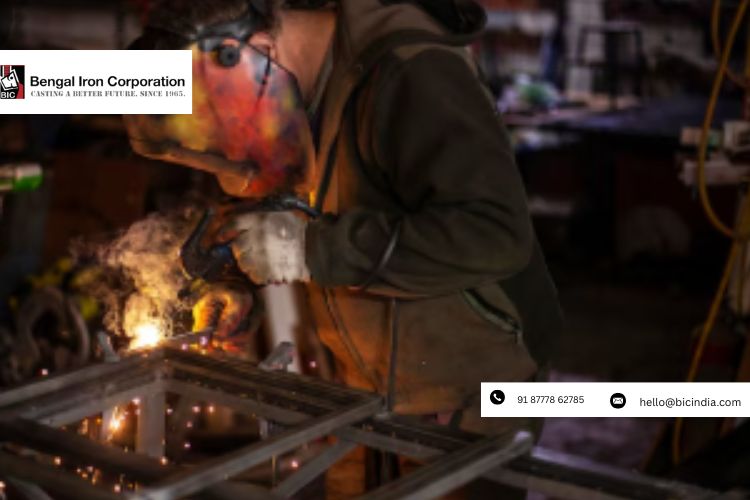Have you ever wondered why India stands tall in the global metal foundry map? It’s not just about volume—it’s about vision, skill, and a quiet mastery of metallurgy. From resilient pipelines to durable manhole covers, Ductile Iron Foundry India facilities have become synonymous with reliability, innovation, and global trust in heavy-duty infrastructure manufacturing.
The Evolution of India’s Iron Foundry Expertise
India’s foundry journey is a fascinating blend of legacy and innovation. With over 4,500 foundries nationwide—according to the Institute of Indian Foundrymen—the country ranks among the top producers of cast and ductile iron components globally. But numbers alone don’t tell the full story. The true edge lies in India’s deep-rooted engineering discipline, resource optimization, and its ability to tailor solutions for industries ranging from water management to automotive and construction.
In the B2B landscape, buyers now expect more than just strength—they demand sustainability, traceability, and precision. Indian manufacturers deliver all three. Each foundry, whether small-scale or export-focused, integrates advanced metallurgy, CAD modeling, and automated casting systems to produce consistent, world-class results.
Understanding Ductile Iron: The Backbone of Modern Infrastructure
Ductile iron—often called nodular cast iron—is known for its unique microstructure that combines strength with flexibility. The spherical graphite nodules within the iron matrix make it far more resilient than traditional grey iron, allowing it to absorb shocks and handle high pressure without cracking. That’s why it’s widely used in municipal drainage systems, heavy machinery, and water pipelines.
Core Advantages of Ductile Iron Products
- Strength with Flexibility: With tensile strength over 420 MPa, ductile iron components outperform grey iron in durability and load-bearing applications.
- Corrosion Resistance: Ideal for water and sewage networks, minimizing maintenance costs over time.
- Cost-Effective Manufacturing: Lower melting temperatures and recyclable material inputs reduce production and energy expenses.
This metallurgical balance of performance and economy makes Indian ductile iron a preferred choice for global infrastructure developers, municipal planners, and industrial engineers alike.
Inside India’s Foundry Operations: Where Innovation Meets Precision
Walk through a modern Indian foundry, and you’ll see cutting-edge automation working side by side with experienced craftsmanship. These facilities use induction furnaces, nodularizing processes, and robotic molding systems to ensure dimensional accuracy and metallurgical uniformity. The middle stage of production often involves precision-machined fittings such as those listed in the hubless cast iron pipe catalogue, enabling leak-proof jointing systems for commercial and civic infrastructure projects.
Key Innovations Driving Indian Foundries
- Implementation of automated pouring and cooling lines for consistent casting quality.
- Adoption of 3D scanning and CAD modeling for custom design adaptation.
- Integration of energy-efficient induction furnaces to reduce carbon emissions.
These advancements not only improve quality but also align Indian foundries with sustainable manufacturing goals, meeting the demands of international B2B buyers focused on environmental compliance and performance reliability.
Applications That Shape the Modern World
Ductile iron products from India are integral to the development of modern urban and industrial infrastructure. Whether it’s a heavy-duty Manhole Cover Near Me for city drainage or precision-engineered cast iron pipe fittings for pressurized pipelines, Indian foundries deliver with unmatched quality assurance and design customization.
Top Sectors Using Indian Ductile Iron Components
- Urban infrastructure and water management projects
- Power and energy transmission systems
- Heavy equipment and construction machinery
- Automotive and transport component manufacturing
According to NITI Aayog, India’s infrastructure expansion plan continues to drive domestic and export demand for these components, reinforcing the sector’s importance in the national industrial growth narrative.
Global Trust and Sustainable Growth
What’s truly remarkable is how Indian ductile iron manufacturers are evolving toward sustainability. Many foundries now recycle scrap iron, optimize furnace energy, and reuse sand molds. The Bureau of Energy Efficiency (beeindia.gov.in) notes that energy-efficient casting processes have already reduced power consumption by 20–30% across several industrial clusters. This focus on eco-efficiency, combined with cost-effective production, has helped Indian exporters gain trust in over 80 countries.
FAQs About Indian Ductile Iron Manufacturing
1. Why is ductile iron preferred in infrastructure projects?
Ductile iron offers a balance of strength, durability, and flexibility—ideal for pipelines, drainage systems, and heavy-load applications.
2. Are Indian ductile iron products export quality?
Yes, many Indian foundries are ISO, BIS, and ASTM certified, ensuring that products meet international standards for performance and safety.
3. How sustainable is ductile iron manufacturing in India?
Indian foundries increasingly use recycled inputs and energy-efficient furnaces, significantly lowering carbon emissions and waste output.
4. Which industries commonly use ductile iron components?
Key sectors include construction, automotive, water infrastructure, and power generation, all relying on its toughness and long service life.
Also Read: How Modern Manufacturing Techniques Improve Urban Sewer Systems
Final Thoughts
Indian expertise in ductile iron manufacturing is not just technical—it’s strategic. It blends time-honored craftsmanship with modern metallurgy, ensuring that every product reflects precision, endurance, and trust. For businesses seeking reliable, cost-effective, and sustainable solutions, India’s foundries are not just suppliers—they’re partners in progress.
Blog Development Credits:
This blog was conceptualized by Bengal Iron Corporation, researched and written using advanced AI tools, with final SEO and content optimization provided by their expert team.



